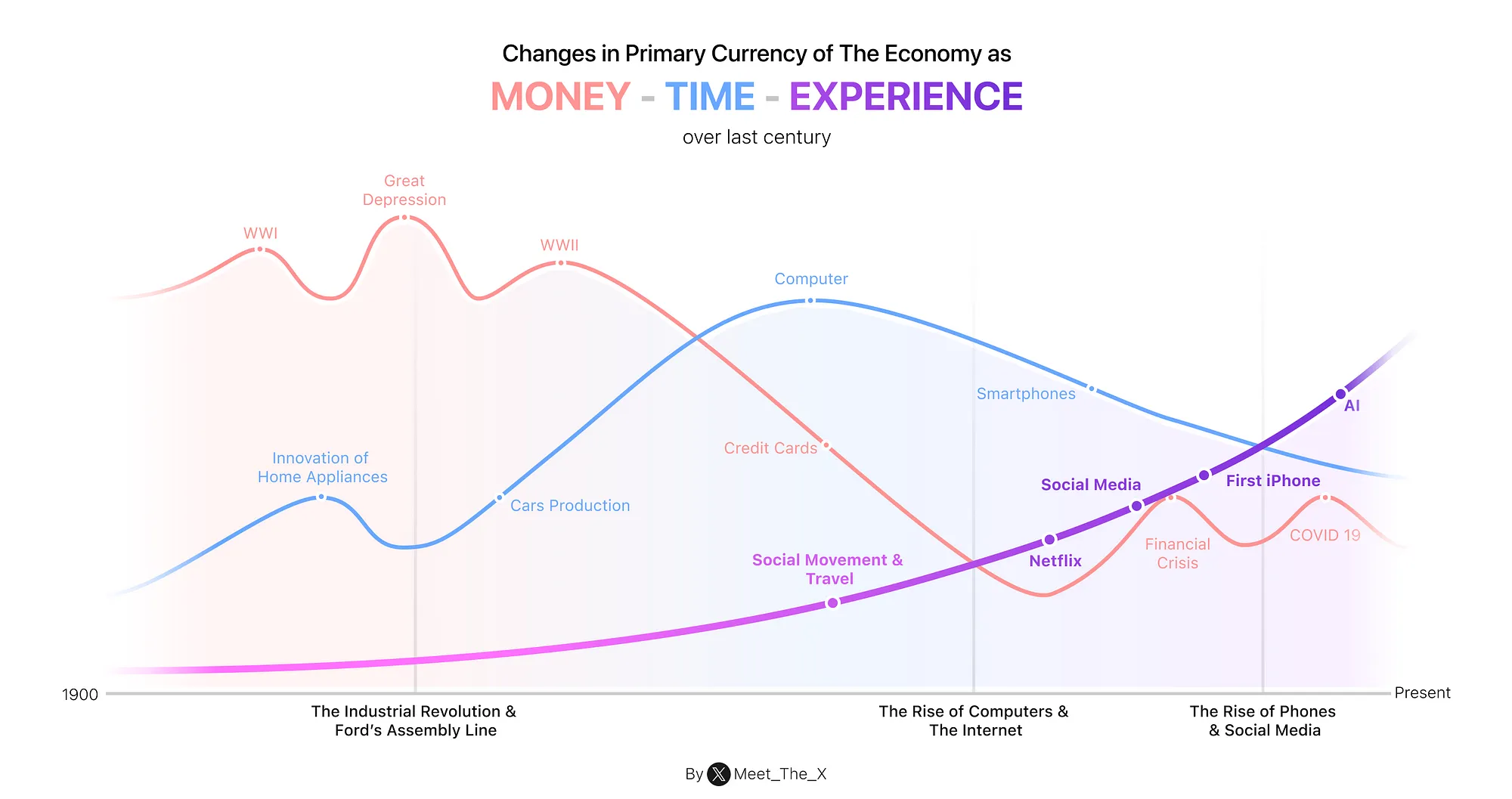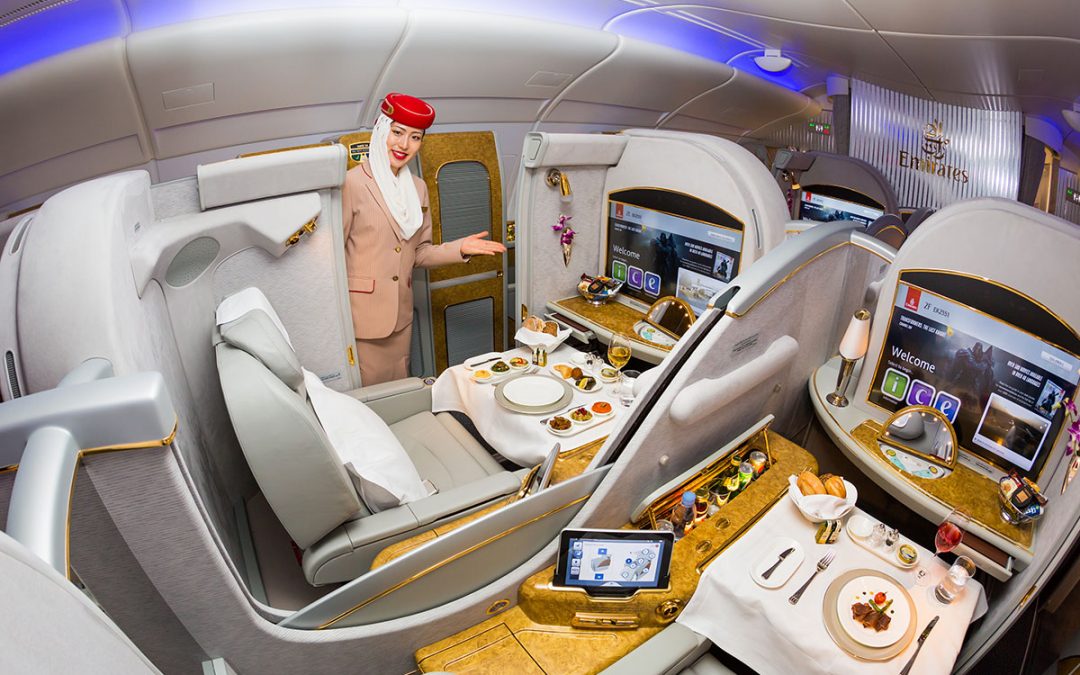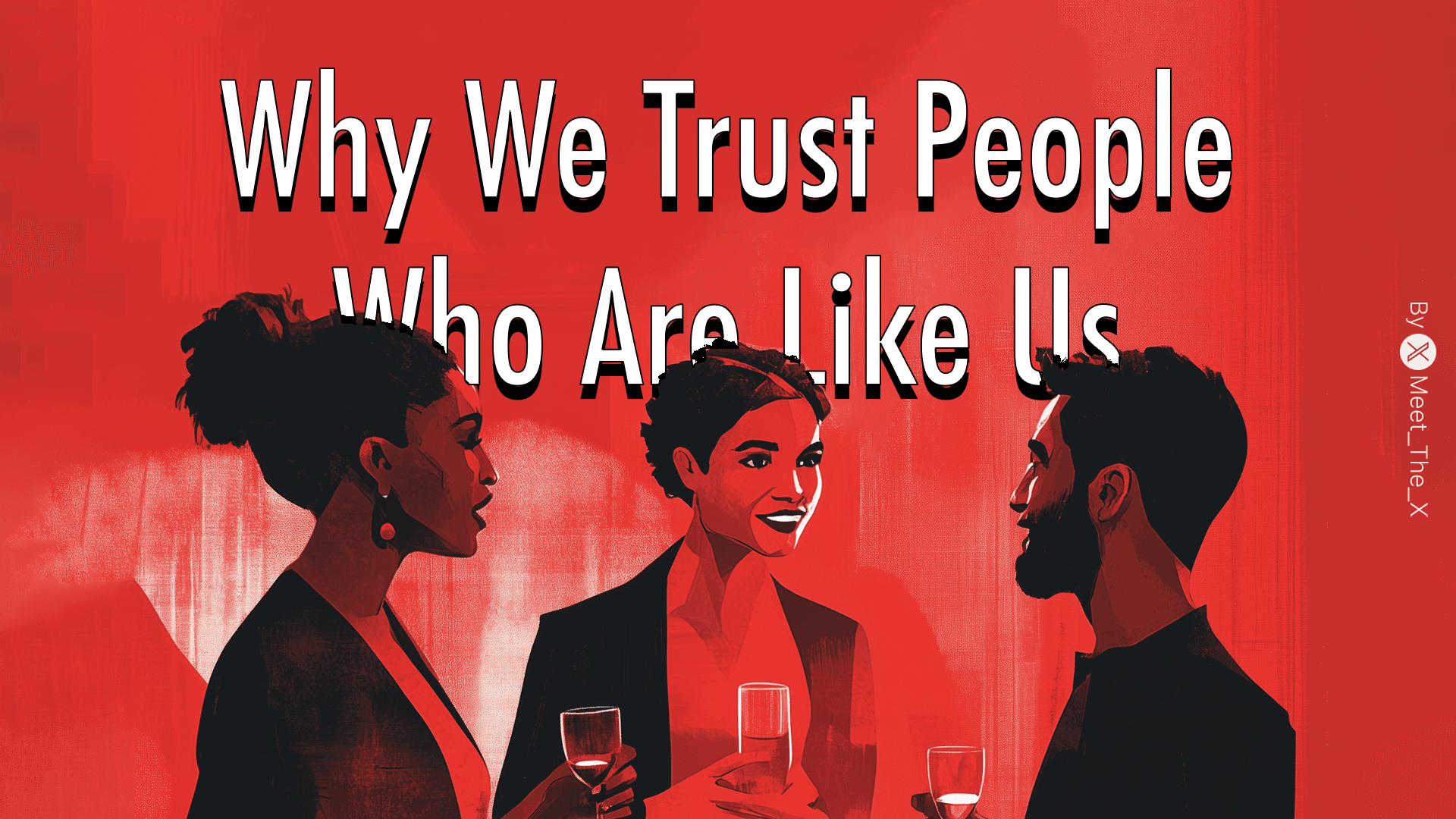Take a look at this Concorde jet advertisement from the ’80s by British Airways. The focus was on speed, boasting about how quickly passengers could cross the Atlantic.
Now, compare that to a recent ad from Qatar Airways. It’s no longer about speed, but about luxury, comfort, and entertainment.
So, What’s Changed? The Experience!
In the past, the goal was to get passengers from point A to point B as quickly as possible. Speed was everything. But today, customers care less about how fast they get there and more about how the journey feels. Airlines now emphasize entertainment, relaxation, and personalization, making the experience as important as the destination itself.This shift reflects a broader trend. Saving time and money has reached its limits, experience has become the most valuable currency. Customers are willing to pay more for products and services that create memorable experiences.
Look at The Shift over Last Century

This shift didn’t happen overnight — it’s been building gradually over the last century as people’s needs and priorities changed.
Before 1900: Most people were doing hard, physical work, so their choices were all about money — getting by and providing for their families was the focus.
1920–1940: As electric home appliances like washing machines became affordable, life got easier for many families. This gave people more free time, and money wasn’t the only thing influencing their decisions anymore.
1940–1950: After World War II, things really started to change. Cars and new infrastructure made life more convenient and saved time and effort. With more time to relax, people began to think about their emotions and what made them feel good, like traveling and spending time with friends.
1970–2000: The arrival of computers and other machines meant tasks took less time and effort. With their basic needs met, people started focusing on what they wanted — looking for things that gave them satisfaction and enjoyment.
1997: Netflix launched, changing how we watch movies.
2004: Facebook brought people together online in a new way.
2007: The first iPhone was released, putting lot of things in a single block.
2022: ChatGPT AI changed the shift to more personalization
Today, if people are hungry, they have plenty of options. But what they’re really looking for is more than just a meal — they want something that stands out and gives them a special experience. It’s no longer just about getting what they need; it’s about enjoying the process and making it memorable.
The Power of Perception in Shaping Experiences
This shift has taught us something fundamental: humans are driven by perception, not reality. For example, a plane’s temperature might be set at a standard level, but if a passenger feels too hot or cold, that perception becomes their reality.
The same applies to digital experiences — a website might load on time, but if it feels slow to the user, that’s what becomes their reality.
Uber Changed How We Feel About it
Uber didn’t succeed just because it was cheaper than taxis. It stood out because it gave people control. With real-time tracking and updates on exactly when your ride would arrive, users felt more in charge of their journey. This sense of control made the waiting time feel shorter and the whole experience more pleasant.
Think about it like this: Imagine you’re waiting for a friend to pick you up, but they don’t tell you when they’ll arrive. You’re left feeling anxious, checking your phone constantly. Now, imagine they text you updates every few minutes: “I’m 10 minutes away,” “I’m 5 minutes away.” You’d feel much more relaxed, knowing exactly when they’ll show up. That’s the difference Uber created — it took something as boring as waiting for a ride and made it less stressful and more engaging.
People don’t just want things to be easy — they want control and enjoyment too. For example, driving a manual car is harder than an automatic, but many drivers love it because it gives them a sense of mastery and control.
Designing for Emotion
It’s no longer just about creating products that work — it’s about crafting experiences that people love and remember. As Henry Ford famously said:
“If I had asked people what they wanted, they would have said faster horse”
People often does’t know what they truly want, even if they say want they want. It’s designer’s job to understand what users’ subconsiciolly want.
One Last Thing from the Greatest Innovator of All Time, Steve Jobs
“It’s really hard to design products by asking people what they want. You have to figure out what they’ll want before they even know it themselves”



